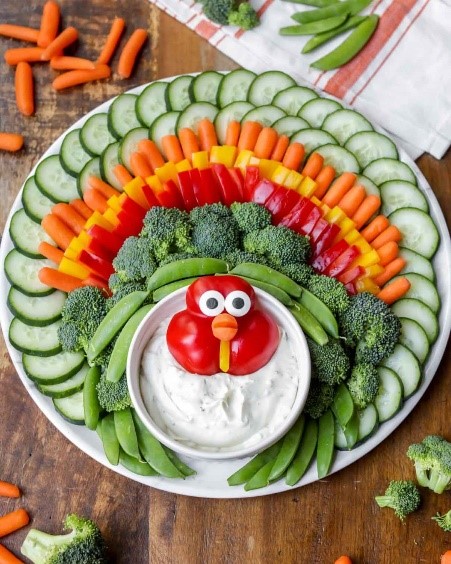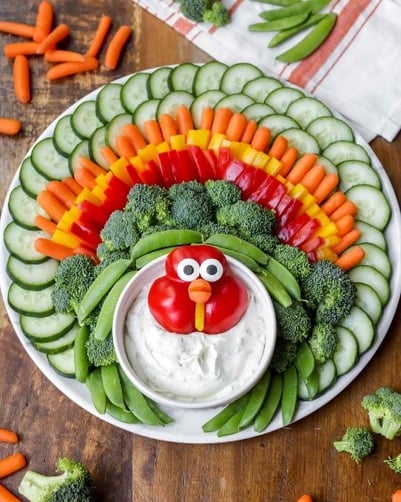By Megan Moore, RDN, LD, CDCES
Happy Thanksgiving! Or is it?
For someone with diabetes (and there are a whopping 34.2 million Americans who have it) the Thanksgiving holiday meal may be viewed as a daunting challenge. Can a diabetic still enjoy this traditionally carbohydrate-heavy, food-focused holiday?
Yes! And here are some tips to help you navigate “the big meal” with success.
As you may know, diabetes is a disease in which the body’s ability to make or properly use insulin is affected. Insulin is a hormone that is made by the pancreas, and it helps your cells store and use energy from food. If you have uncontrolled diabetes, glucose collects in the blood but cannot be transported into the cells. Thus, your body is not getting the energy it needs. As these high levels of glucose circulate through the body, they are damaging the arteries along the way.
Diabetes increases the risk of having a heart attack or stroke and may lead to serious kidney, eye, and nerve damage if it is not managed well. For more tips on how to prevent and manage diabetes read our blog on Diabetes Facts.
What you eat, when you eat, and how much you eat at one time are all extremely important when it comes to managing blood glucose—even on holidays. It’s ok to indulge a little, but it’s not worth risking your health over a second helping of stuffing and pumpkin pie.
Here are some tips to help you enjoy special meals without feeling deprived or feeling sick the rest of the day:
Plan Ahead.
Plan to eat three main meals just as you normally would. Skipping breakfast in anticipation of eating a large lunch is not a good idea. You’ll be less likely to over-eat at your Thanksgiving meal if you have not starved yourself beforehand.
Use a Small Plate.
Research shows that simply using a 10” plate versus a 12” plate results in people eating less food. The visual appearance of a large plate with a small amount of food makes us mentally feel deprived and subconsciously add more food to the plate. However, a
small plate that appears full of food helps us to mentally eat less without feeling deprived.
Fill Up on Veggies.
Non-starchy veggies are free game and should fill 50% of your plate. Roasted Brussels sprouts, fresh steamed green beans (instead of green bean casserole), tossed green salads, and mashed cauliflower (instead of traditional potatoes) are excellent choices! You could even volunteer to bring a beautiful, Pinterest-worthy veggie tray yourself!

Be Selective.
Survey the buffet and decide which two or three carb dishes you want most. Moderation is key! Only about ¼ of your plate should be filled with carbs. If you love stuffing, then by all means have some stuffing! Just portion it out so that your total carbohydrate grams add up to about 45-60 grams total for the entire meal (1/2 cup is about 15 grams of carbs). Be sure to account for dessert if you plan on having it as part of your meal too.
Drink Water.
Skip the quick-acting carbohydrates from beverages such as apple cider, sweet tea, alcohol, lemonade, and soda. Lots of good, pure water is your best bet.
Check your Blood Sugar.
Be sure to check your blood sugar before your meal, two hours after your meal, and more frequently the rest of the day, especially if you take insulin. When you eat foods you aren’t used to eating, your blood sugar may do things it doesn’t normally do.
Delay Dessert.
Who says you have to skip dessert? One tradition to begin this year is to delay dessert a few hours and have coffee and dessert as an afternoon snack. Perhaps you go for a long walk or put up Christmas decorations to allow for you blood sugar to lower in between lunch and dessert.
Earn your Splurge.
Plan a Thanksgiving morning workout session! While you won’t burn off all the calories from the big meal, there are many benefits to being active. Exercise improves your blood sugar and puts you in a positive mindset to eat with a healthy intent. Additionally, grab the family and go for a walk after the meal as well. Moving around after you eat helps your insulin work better and draws your blood sugar into your muscle cells. Go, go, go!
Give Thanks.
Instead of focusing solely on the food, aim to purposely focus your mind on the many things God has blessed you with this year. Focus on the people in your life and have intentional conversations with them at dinner. Tell them how thankful you are for them and ask them what they are most thankful for too.
With these practical tips, whether you have diabetes or not, you can have a happy (and healthy) Thanksgiving with your friends and family this year. Don’t feel deprived, but don’t go over-board either. It’s a balanced and an intentional Thanksgiving approach that will leave you feeling healthy and energetic all day.






